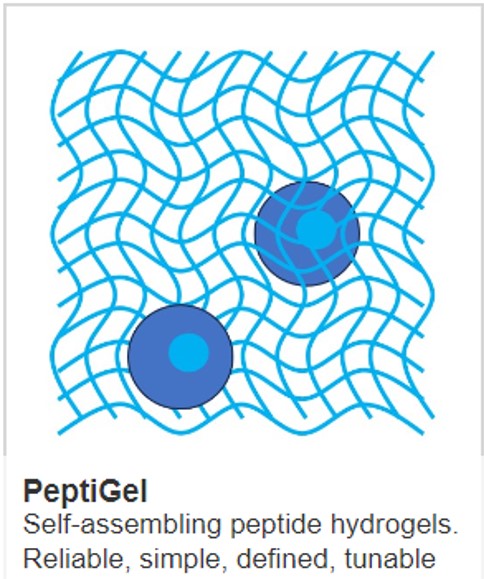Hydrogels and tunability

Hydrogels are being increasingly used for a wide range of biomedical applications including cell culture, drug delivery, tissue engineering and wound healing. This research has opened up new opportunities to provide materials that are triggerable and tuneable.
What are hydrogels?
Hydrogels are cross-linked hydrophilic polymers that do not dissolve in water, meaning they are highly absorbent yet able to maintain well-defined structures.
Hydrogels can be prepared using a variety of polymeric materials, which can be broadly divided into two categories according to their origin:
- Natural polymers for hydrogel preparation including alginate, chitosan, heparin, hyaluronic acid, and fibrin
- Synthetic polymers for hydrogel preparation including acrylate polymers, copolymers, polyethylene glycol, polyvinyl alcohol and sodium polyacrylate
Hydrogels have become really popular in biomedicine due to their unique properties including biocompatibility, high water content, flexibility, softness & tunability. Their close resemblance to living tissue opens up many opportunities for applications in biomedical areas such as drug delivery systems and tissue engineering scaffolds.
What is tunability and why is it important?
Tunability literally means the ability of something to have its parameters to be tuned.
Different organs in the human body have different stiffnesses, and the fact that hydrogels can be tuned to match these makes research outcomes much more relevant. The properties of scaffolds can affect cell behaviour such as cell attachment, differentiation and proliferation. It is important to match the stiffness of the scaffold as closely as possible to the tissue type to create a more representative in vivo environment in vitro.
Different diseases in the body also create different environments. For example, tumours are stiffer and more acidic. In a the paper “Self-Assembling Polypeptide Hydrogels as a Platform to Recapitulate the Tumour Microenvironment” two key hallmarks that characterise the tumour microenvironment are examined:
- The increased stiffness of the aberrant ECM (tumour desmoplasia)
- Low extracellular pH of the interstitial fluid
These hallmarks remodel the native ECM through the deposition of ECM fibres, the secretion of matrix metalloproteinases (MMPs) and physically through their contractility which has led to the development of biomaterials that can serve as cell culture substrates with tuneable stiffness.
Hydrogels can be manipulated so that their properties more closely meet the required physical and chemical properties of many biomedical applications. Hydrogels can be tuned to respond to specific environmental cues and external stimuli as provided by the surrounding cells or by the researcher. This is one of the reasons why they are so popular in biomedical engineering research as they are able to display such adaptable and dynamic properties.
At Cell Guidance Systems, we can provide you with different hydrogels for 3D cell culture running from 0.5 to 10 kPa with different pH and charges, and so on. We can also add in biomimetic sequences of key ECM proteins such as fibronectin (RGD), collagen (GFOGER) and laminin (ILVAV & YIGSR) which are all prevalent in different concentrations in different tissues. We also provide PODS sustained release growth factors which can be incorporated into the hydrogel to provide further functionalisation.
To find out more about Cell Guidance Systems PeptiGels and how they are tuneable please get in touch with our expert team.
IMAGE: Neurons in developing brain Jonathan Clarke.



